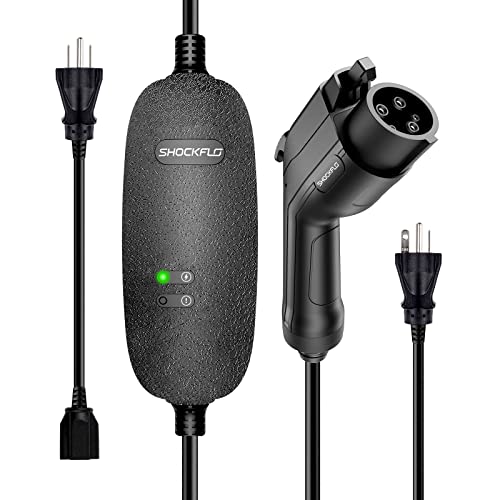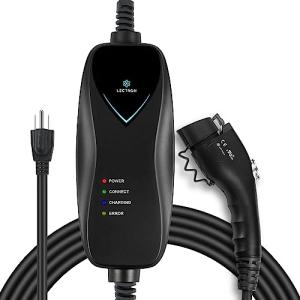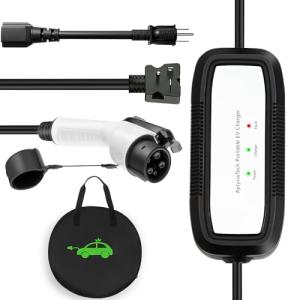First, consider the power level. Level 1 chargers plug into a standard household outlet. They’re perfect for overnight charging but can be slow, adding only a few miles of range per hour. If you’re just using your vehicle for short trips, this might work well for you. On the other hand, Level 2 chargers need a dedicated circuit, but they charge your car much faster. This option is ideal if you drive more frequently or longer distances.
Next up is compatibility. Most electric vehicles will work with the standard chargers, but it's a good idea to double-check. Check your car’s manual to see what charger suits it best. Some newer models might have advanced features that work better with specific chargers.
Lastly, think about installation. Some Home Electric Vehicle Chargers are easy to set up yourself, while others might require professional help. Make sure to factor installation costs into your budget. If you’re going for a Level 2 charger, it’s generally a good idea to get a pro to handle it for you, just to be safe.
Understanding Charger Types
When it comes to home electric vehicle chargers, knowing your options can make all the difference. There are three main types of chargers you'll encounter: Level 1, Level 2, and DC Fast Chargers. Each one has its own benefits and features, so let’s break them down.
The Level 1 charger is the simplest and most accessible option. It plugs into a regular household outlet and works with any standard 120-volt connection. This type of charger is great if you’re not in a hurry to charge your vehicle. Just plug it in overnight, and you'll wake up to a fully charged battery. However, it does take a while to charge, typically providing around 4-5 miles of range per hour.
Next up is the Level 2 charger. This charger uses a 240-volt outlet, similar to what you’d find for a dryer or a stove. It’s much faster than Level 1, giving you about 10 to 60 miles of range per hour, depending on your vehicle and charger setup. If you want something that fits into your daily routine without long wait times, a Level 2 charger is a solid choice. Many people find this setup helps them get their car fully charged in a few hours.
Then we have the DC Fast Charger. This is the powerhouse for quick charging and is typically found at public charging stations. It can get most EVs back to 80% in around 30 minutes! While it’s fantastic for quick stops during longer trips, having one installed at home isn’t practical for most people due to the high cost and electrical requirements.
In short, think about how you use your car day-to-day. If you drive a lot and need a quick top-up, a Level 2 charger is the way to go. For a casual user, Level 1 might be just fine. Understanding these types will help you choose the right home electric vehicle chargers for your needs!
Electric Vehicle Charger Port Cover - All-Weather Protection
Keep your charger safe from the elements with this durable cover designed for every season
Product information
$8.99
Product Review Score
4.96 out of 5 stars
25 reviewsProduct links
Installation Made Easy
Installing Home Electric Vehicle Chargers doesn’t have to feel like rocket science. With a few simple steps, you can get your charger up and running in no time. First thing’s first: check if your electrical system can handle a charger. Most chargers require a dedicated circuit, so you might need an electrician if your home’s setup isn’t ready.
Once you’ve got the electrical side sorted, pick a spot for your charger. Ideally, it should be close to where you park your electric vehicle. Consider factors like proximity to your electrical panel and whether you'll need an extension cord. A shady area could also help keep the unit cool during hot weather.
Next, follow the manufacturer’s instructions during the installation process. Many chargers come with clear guides, which make it easy to hook everything up. If you’re using a hardwired charger, definitely get a professional to connect it. It’s always better to be safe than sorry when it comes to electricity!
Once installed, give your Home Electric Vehicle Chargers a test run. Plug in your car and make sure everything is working smoothly. Keep an eye on the indicator lights, as they usually show the status of the charging process. If everything looks good, you’re all set to enjoy the convenience of charging at home!
ChargePoint Home Flex Level 2 EV Charger
The ultimate solution for fast and flexible charging at home
Product information
$451.91
Product Review Score
4.38 out of 5 stars
230 reviewsProduct links
Maximizing Charging Efficiency
If you want to get the most out of your Home Electric Vehicle Chargers, a few easy steps can help maximize charging efficiency. First things first, understanding your EV's battery and the charger’s capabilities is key. Different models have different charging speeds and capacities, so knowing your vehicle's specs will help you choose the best charger and settings.
Next, consider the time of day you charge. Charging during off-peak hours can save you money and ensure that your EV is ready to go when you need it. Many Home Electric Vehicle Chargers offer smart features that let you schedule charging sessions. Set it to charge when electricity rates are the lowest—or when you know you won’t be using your car for a while.
Another handy tip is to keep your battery between 20% and 80%. This range helps maintain battery health over time. Overcharging isn’t just a waste; it can actually shorten the life of your battery. Some chargers come with settings that automatically stop charging once this range is reached, making it easier for you.
Finally, don’t forget about regular maintenance. Dust and debris can clog your charger, affecting its performance. A quick wipe down every now and then and checking the connections will keep your Home Electric Vehicle Chargers running smoothly. It’s these small things that can make a big difference in charging efficiency!





